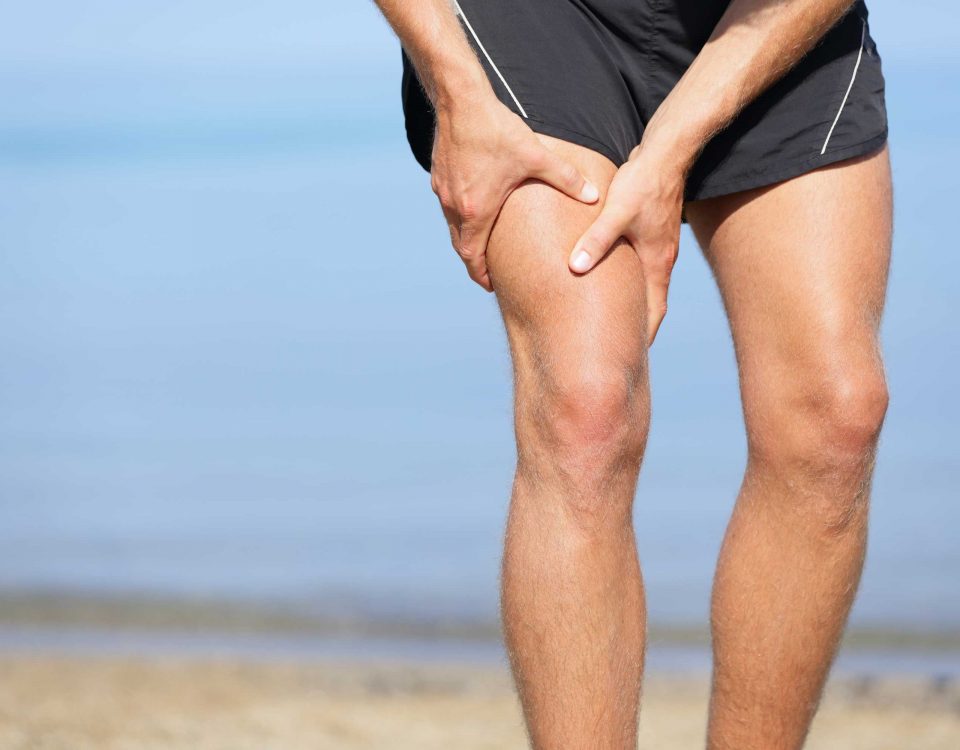Know All About Varicose Veins – Types | Causes | Symptoms | Diagnosis | Treatment Options

Know all about Deep Vein Thrombosis (DVT) | Causes, Diagnosis & Treatment
December 17, 2021Know All About Varicose Veins – Types | Causes | Symptoms | Diagnosis | Treatment Options


Varicose veins are enlarged, swollen, twisted veins normally seen in legs. Varicose Veins are more common in women than men. Varicose veins are not considered a serious medical condition. But, they can be uncomfortable and can lead to more serious problems.
Types Of VARICOSE VEINS
There are different types of varicose veins, and they are different in terms of how severe they are or what caused them. Here are a few more details on the different varicose vein types and what you should know about them.

Reticular Varicose Veins
Smaller than varicose veins – usually no more than 2mm in size – reticular veins also do not protrude above the skin the way that varicose veins do. Due to being filled with deoxygenated blood, they appear blue or purple in colour. Reticular veins do not bulge above the surface of your skin.
Saphenous Origin Veins
The great saphenous vein forms on the upper surface of the foot as the continuation of the medial marginal vein of the foot. It then passes anteriorly to the medial malleolus to ascend at first medial to and then posterior to the medial aspect of the tibia.
The medial marginal vein helps form the origin of the great saphenous vein and drains blood from the sole of the foot. The small saphenous vein drains the lateral surfaces in the upper foot, ankle, and parts of the leg.


Saphenous Origin Veins
The great saphenous vein forms on the upper surface of the foot as the continuation of the medial marginal vein of the foot. It then passes anteriorly to the medial malleolus to ascend at first medial to and then posterior to the medial aspect of the tibia.
The medial marginal vein helps form the origin of the great saphenous vein and drains blood from the sole of the foot. The small saphenous vein drains the lateral surfaces in the upper foot, ankle, and parts of the leg.

Pelvic Origin Veins
Pelvic origin lower extremity varicose veins arising from the pelvic escape points and extending into the thigh. Includes visible varicosities, typically over the posteromedial thigh, as well as sciatic varicose and other refluxing veins transitioning the pelvic floor which is visualized only with ultrasound.
Enlarged veins in the pelvis seem to play a major role. But many women have enlarged veins and no symptoms. Pregnancy may increase the risk of pelvic congestion syndrome. This is because veins enlarge during pregnancy to support the increased blood flow.
Causes Of VARICOSE VEINS
- Weak or damaged valves can lead to varicose veins.
- Primary Varicose Veins by an enlarge are Genetic in origin. They are due to Hormonal Influence. They are not due to Standing Posture, Eating some kind of Food, Some Habits.
- Secondary Varicose Veins means veins that are secondary to other problems like DVT or some kind of Vascular Malformation.
Symptoms Of VARICOSE VEINS
Asymptomatic Symptoms

Leg Pain, Discomfort
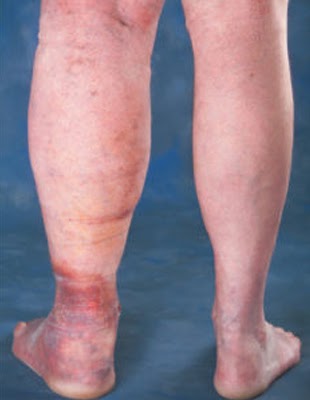
Calf Swelling
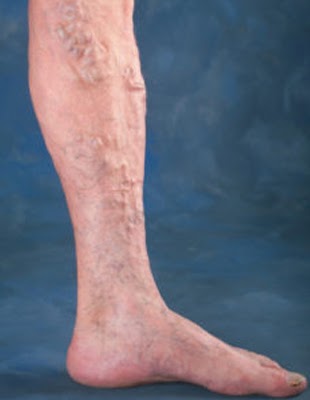
Visible Veins
Advanced Symptoms

Skin Discoloration (Black or Brown)

Eczema/Non-Healing Ulcer
How Do We Diagnose VARICOSE VEINS?
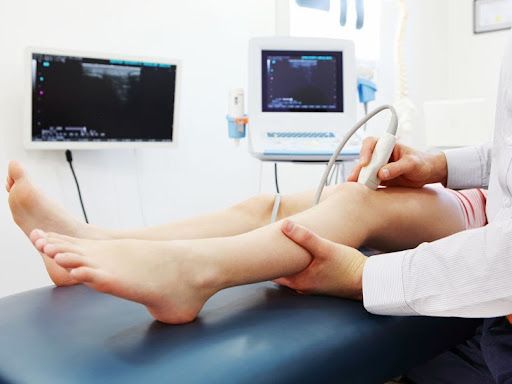
Color Doppler Ultrasound
- Simple | Non-Invasive | Non-Painful
Color Doppler Ultrasound - Essential Diagnosis Method
- Direction of Blood Flow
- Function of Valves
- Involvement of different types of Veins
Treatment Options For VARICOSE VEINS
Reticular or Spider Veins essentially don't require unless they BLEED.
In Early Cases Or Mild Symptomatic Cases:
- Compression Stockings
- Drugs like Flavonoids & Calcium Dobesilate
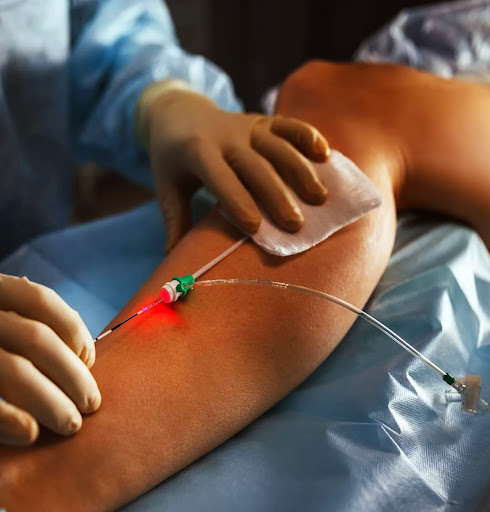
These days, Non-Invasive Treatment Options are available for Symptomatic Patients.
- Endovenous Procedure
- Laser Ablation
- Radiofrequency Ablation
- Glue Ablation
- Steam Bubbles
- MOCA (Mechanochemical Ablation)
Complications Of ENDOVENOUS PROCEDURE
Endovenous Procedure is Safe, Very Effective and 1%-2% of patients might develop complications or consequences.
Consequences Include like Deep Vein Thrombosis (DVT), Nerve Injury, Skin Burns, Infection.

Consequences Of Untreated VARICOSE VEINS
- There are no serious consequences like life loss or limb loss of well-treated Varicose Veins.
- If you don't treat them correctly in time Varicose Veins might progress and a person might develop some kind of bad symptoms like Leg Pain, Leg Swelling, Skin Eczema, Non-Healing Ulcer.
Advantages of Minimally Invasive Endovenous Methods
A patient can go back to routine activities immediately the next day after the operation. Patients do not need to take any special precautions.
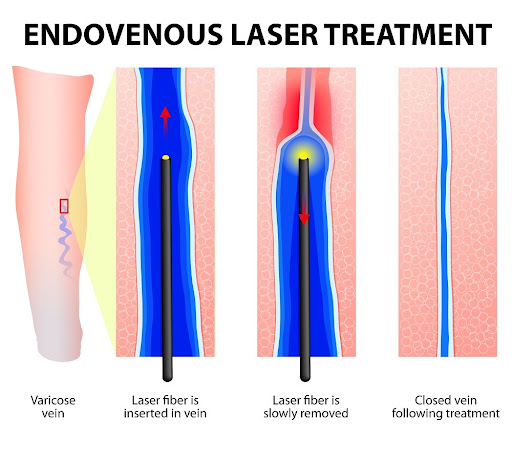
MYTH
People believe that Varicose Veins occur because of Prolonged Standing.
FACT
Because of Prolonged Standing Varicose Veins might be present or might be seen earlier than other people.
FAQ: How do we prevent Varicose Veins?
Ans: Unfortunately, due to Genetic or Hormonal Influence, it is difficult to prevent the occurrence of Varicose Veins. No need for any Special Post Operative Care after Endovenous Operation.
If you are suffering from Varicose Veins for a long period of time & not able to get the proper treatment, then visit Dr. Vijay Thakore, who is the Varicose Veins Specialist in Vadodara, Gujarat. He offers the latest, pain-free & minimally invasive treatment options for treating Varicose Veins
Dr. Vijay Thakore is a senior, qualified Vascular and Endovascular Surgeon in clinical practice for the last 25 years. Our team offers comprehensive state-of-the-art Diagnostic and Therapeutic Interventions for the entire spectrum of vascular disorders, from Medical Management to Minimally Invasive Endovascular Therapy to Conventional Open Vascular surgery.

